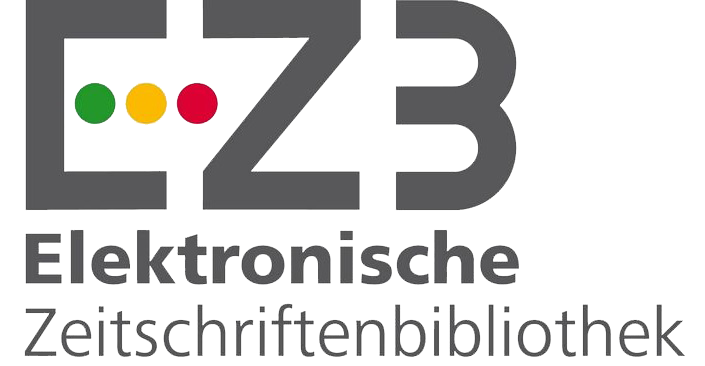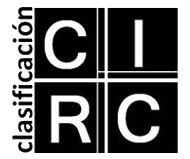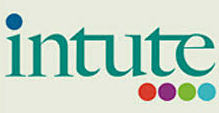Prestige and technology
appropriation of the mobile phone in social differentiation practices
DOI:
https://doi.org/10.24215/16696581e640Keywords:
Social status, communication technology, mobile phone, social inequalityAbstract
This article, the result of a doctoral research, relied on the theory of statutory consumption to describe the social impact of the appropriation of mobile devices on the practices of prestige and differentiation of groups belonging to social classes. He responded to a mixed type of investigation, using qualitative biographical interview techniques for six people and quantitative techniques such as the survey for 122 people. Among its main results it was evidenced how the emulation practices around the use, purchase and excessive spending on models and brands, as well as the daily need to show off these devices contribute to reproduce and naturalize the orders of social inequality in contexts of profound inequity such as that faced in Colombia.
Downloads
References
Benítez, S, Winocur, R. (2010). Internet y la computadora como estrategias de inclusión social entre los sectores populares. Imaginarios y prácticas desde la exclusión. Revista Comunicação & Inovação, 11 (20), 3-25.
Baudrillard, J. (1969). El sistema de los objetos. México: Siglo XXI.
Bourdieu, P. (1979, 2002). La distinción. Crítica social del gusto. México D.F: Taurus.
Campbell, C. (1995) Conspicuous Confusion. A Critique of Veblen's Theory of
Conspicuous Consumption. American Sociological Association, 13 (1), 37-47.
Deaton, A. (2015). El gran escape. Salud, riqueza y los orígenes de la desigualdad. Bogotá, Colombia: Fondo de Cultura Económica.
Diggins, J. (2003). Thorstein Veblen. Teórico de la clase ociosa. Mexico D.F: Fondo de Cultura Económica.
Fernández, P. (2014). Consumos culturales en América Latina y la emergencia del prosumidor: un recorrido conceptual desde la Sociedad de la Información. Revista Communication Papers, 4, 87 -100. https://acortar.link/FsVCe8
García Canclini, N. (1995). Consumidores y ciudadanos. Conflictos multiculturales de la globalización. México: Editorial Grijalbo.
García, M. C. & Monferrer, J. (2009) Propuesta de análisis teórico sobre el uso del teléfono móvil en adolescentes, Comunicar, 27(33), 83-92. https://acortar.link/fvwVhz
Geser, H. (2006). Pre teen cell phone adoption: Consequences for later patterns of phone usage and involvement, sociology of the mobile phone, http://socio.ch/mobile/t_geser2.htm
Hernández Sampieri, R., Fernández Collado, C., y Baptista Lucio, P. (2008). Metodología de la investigación. México D.F.: McGraw-Hill.
Katz, J., & Aakhus, M. (2002). Conclusion: Making meaning of mobiles – a theory of Apparatgeist. In J. Katz & M. Aakhus (Eds.), Perpetual Contact:
Mobile Communication, Private Talk, Public Performance (pp. 301-318). Cambridge: Cambridge University Press.
Lipovetsky, G. & Roux, E. (2004). El lujo eterno: de la era de lo sagrado al tiempo de las marcas. Barcelona: Anagrama.
Loudon, D., & Della Bitta, A. (1995). Comportamiento del consumidor: conceptos y aplicaciones. México: McGraw-Hill.
Mackay, H. & Gillespie, G. (1992). Extending the Social Shaping of Technology Approach: Ideology and Appropriation, Social Studies of Science, 22, 685-716. https://doi.org/10.1177/030631292022004006
Molina, J. L., & Valenzuela, H. (2007). Invitación a la antropología económica. Barcelona, España: Ediciones Bellaterra.
Narotky, S. (2004). Antropología económica. nuevas tendencias. Barcelona, España: Melusina.
Oliveros, D. (2017) El precio de acceder a lo digital: conflictos de centralidad entre el capital cultural y el capital TIC en clases medias y bajas de Bogotá, Colombia. Contratexto, 028, 93- 116. https://doi.org/10.26439/contratexto2017.n028.1552
Oliveros, D. (2020). Sacrificio, orgullo y consumo conspicuo en movilidades sociales de clases medias y bajas en Bogotá, Colombia. (Tesis de doctorado). https://www.tesisenred.net/bitstream/handle/10803/670698/deof1de1.pdf?sequence=1&isAllowed=y
Page, C. (1992). Una historia de consumo conspicuo. Rudmin, F & Richins, M. (eds.) Meaning, Measure, and Morality of Materialism, Provo, UT: Asociación para la Investigación del Consumidor pp. 82-87. https://acortar.link/bCLhST
Ruelas, A. L. (2010). El teléfono celular y las aproximaciones para su estudio. Comunicación y sociedad, 14), 143-167. https://acortar.link/P0sgP3
Ryu, J. (2015). The Emergence of New Conspicuous Consumption. Journal of Distribution Science, 13 (6) ,5-10. http://dx.doi.org/10.15722/jds.13.6.201506.5
Scolari, C. (2008). Hipermediaciones: elementos para una teoría de la comunicación digital interactiva. España: Editorial Geodisa.
Scott, David. (2010). What Would Veblen Say? Leisure Sciences. 32, 288-294.
Silverstone, R. and Haddon, L. (1996) ‘Design and the Domestication of Information and Communication Technologies: Technical Change and Everyday Life’, in Silverstone, R. and Mansell, R (eds) Communication by Design. The Politics of Information and Communication Technologies, Oxford University Press, Oxford, pp. 44-74.
Therborn, G. (2015). Los campos de exterminio de la desigualdad. Buenos Aires, Argentina: Fondo de Cultura Económica.
Trigg, A.B. (2001). Veblen, Bourdieu, and Conspicuous Consumption. Journal of Economic, 35 (1), 99-115. http://www.jstor.org/stable/4227638 .
Veblen, T. (1899, 1994). Teoría de la Clase Ociosa. Madrid: Alianza Editorial.
Downloads
Published
How to Cite
Issue
Section
License
La aceptación de un original por parte de la revista implica la cesión no exclusiva de los derechos patrimoniales de los/as autores/as en favor del editor, quien permite la reutilización, luego de su edición (postprint), bajo una Licencia Creative Commons Atribución-NoComercial-CompartirIgual 4.0 Internacional (CC BY-NC-SA 4.0)
Acorde a estos términos, el material se puede compartir (copiar y redistribuir en cualquier medio o formato) y adaptar (remezclar, transformar y crear a partir del material otra obra), siempre que a) se cite la autoría y la fuente original de su publicación (revista y URL de la obra), b) no se use para fines comerciales y c) se mantengan los mismos términos de la licencia.
La cesión de derechos no exclusivos implica que luego de su edición (postprint) en Question las/os autoras/es pueden publicar su trabajo en cualquier idioma, medio y formato; en tales casos, se solicita que se consigne que el material fue publicado originalmente en esta revista.
Tal cesión supone, también, la autorización de los/as autores/as para que el trabajo sea cosechado por SEDICI, el repositorio institucional de la Universidad Nacional de La Plata, y sea difundido en las bases de datos que el equipo editorial considere adecuadas para incrementar la visibilidad de la publicación y de sus autores/as.
Asimismo, la revista incentiva a las/os autoras/es para que luego de su publicación en Question depositen sus producciones en otros repositorios institucionales y temáticos, bajo el principio de que ofrecer a la sociedad la producción científica y académica sin restricciones contribuye a un mayor intercambio del conocimiento global.















































